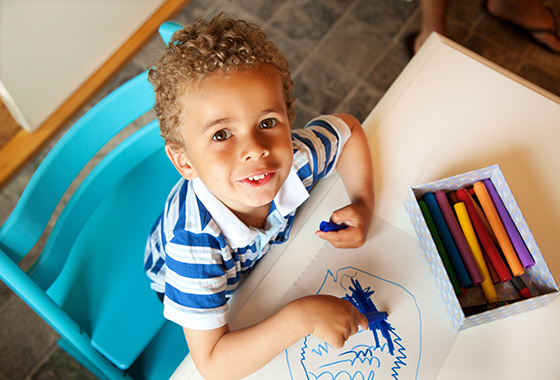Home » People and Settings » Children and Family Services
Children and Family Services
Overview of Children and Family Services
Children and Family Services provide support to children who do not have natural family members who can care for them. There are a number of settings that support children including foster care, adoption, group homes, or shelters. Adults with disabilities may live with foster families as well. Children or adults who are in foster care or other settings may feel sad, angry, depressed, or anxious. These feelings can be due to a past history of trauma from past abuse, the death of family members, and feelings of loss. Over time, these feelings can make it difficult to be successful in school or at work. Positive supports are used to help children and adults. These practices help improve the quality of a person’s life and increase emotional and behavioral health.



Stories Across the Lifespan
These stories show how children and family services can use positive supports to help improve the quality of life outcomes for children and their caregivers.
- ABA and Community Living: Roberto, Don, and Paul (MNPSP web page)
- Assertive Community Treatment: Melissa (MNPSP web page)
- Person-Centered Practices and Early Childhood: Emily and Michael (MNPSP web page)
- Person-Centered Practices and Families: Steven and Tony (MNPSP web page)
- ABA and Families: Garcia Family (MNPSP web page)
Children and Family Services Resources
- Minnesota Adult Mental Health Assertive Community Treatment Information (external web page)
- Minnesota Standards for Assertive Community Treatment (external web page)
- Assertive Community Treatment Summary (pdf)
- Assertive Community Treatment Implementation Manual—The Evidence-based Treatment Guide from The Center for Evidence-based Practices and Its Ohio Assertive Community Treatment Coordinating Center of Excellence (external web page)
- Cost Effectiveness of Assertive Community Treatment (pdf)
- Positive Behavioral Interventions and Supports in Minnesota (PBISMN) (external web page)
- MnCHOICES (external web page)
- The Adolescent Brain: New Research and Its Implications for Young People Transitioning from Foster Care (pdf)
- Community Report on Autism (pdf)
- Impact Newsletter: Impact: Feature Issue on Children with Disabilities in the Child Welfare System (external web page)
- Impact Newsletter: Feature Issue on Parenting Teens and Young Adults with Disabilities (external web page)
- DHS Children and Family Resources (external web page)
- No Spanking, No Time-Out – Atlantic Article (external web page)
- MNABA (external web page)
- What is Applied Behavior Analysis? (pdf)
- Culturally Sensitive Collaboration within Person-Centered Planning (2003) (pdf)
- Person-Centered Thinking: Improving the Quality of Person-centered Planning (pdf)
- Making Person-Centered Planning Mainstream: How to Get Started (external web page)
- Information About MAPS (external web page)
- Helen Sanderson Associates Person-Centered Thinking Tools (external web page)
- Assessing the Wraparound Process During Family Planning Meetings (external web page)
- The Wraparound Process User’s Guide for Families (pdf)
- Wraparound is Doing Well: An Evidence-based Statement (pdf)
- Systems of Care: Milwaukee (external web page)
- National Wraparound Initiative (external web page)
Positive Support Strategies for Children and Family Services
Below are some articles designed to provide important background information about topics that are relevant across lifespans and settings.
- Applied Behavior Analysis in Practice – ABA is focused on better understanding how different variables impact an individual’s behavior.
- Assertive Community Treatment History – A group of mental health professionals reviewed the mental health system to determine strategies to help people remain in their communities.
- Person-Centered Planning and Promoting Quality of Life – One way to think about person-centered practices from a systems perspective is to use a Three-Tiered Model of Positive Supports.
- PBS and Preventing Problem Behavior Using the Three-Tiered System – Considering larger organizational issues can be a helpful way to create a positive climate and prevent challenging behavior.
- Positive Behavior Support and Individualized Planning – The first step in an individualized positive behavior support process at Tier 3 is to set up a person-centered plan.
- Trauma Informed Approaches and Three-Tiered Systems of Positive Support – Trauma informed care approaches are implemented across education and human service organizations.
- Relationship Between Applied Behavior Analysis and Positive Behavior Support – Understand the history and current relationship between Applied Behavior Analysis and Positive Behavior Support

